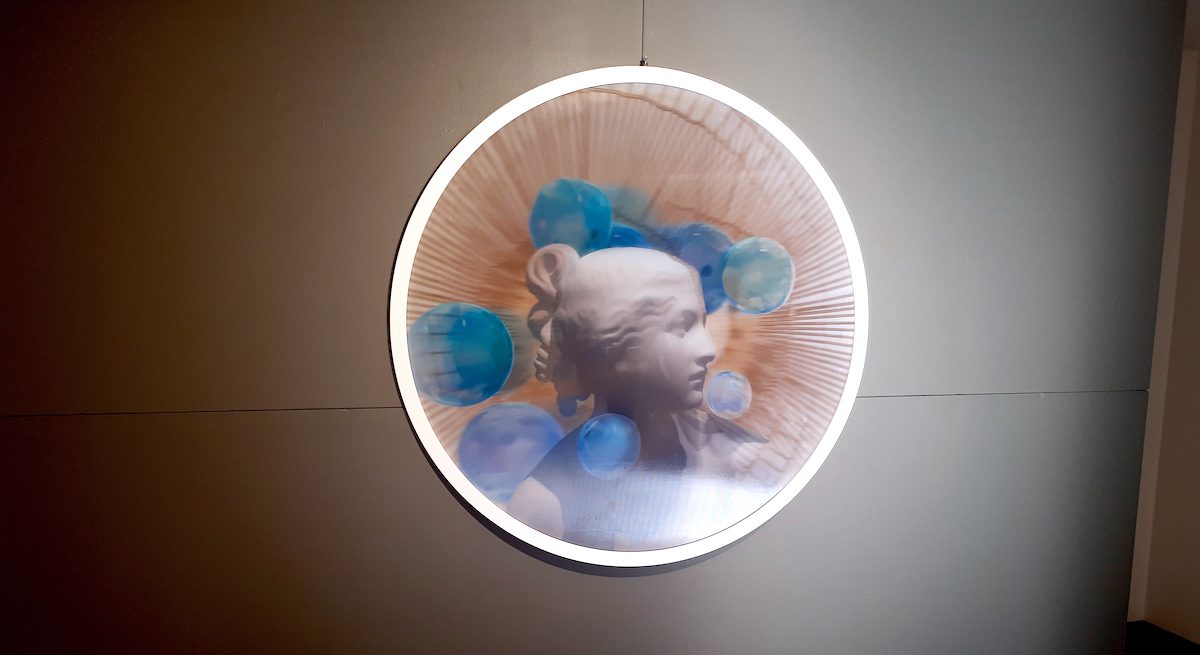A fascinating visit to Trieste, for the opening of a show by Olga Tobreluts, an artist whom I’ve known personally since the fairly early 1990s – that is, since just after the Soviet Union fell apart.
Olga was a close associate of Timur Novikov, an artist and critic who was a very active promoter of St Petersburg Neo-Classicism. This style had begun to emerge in the so-called perestroika epoch, that is to say during the cultural thaw of the Gorbachev period, and is still very much alive in Russia today, when Socialist Realism is long dead, and there is a bewildering spectrum of Russian art-styles, many little known here in the West, where appointed experts remain obsessed with idea of ‘Russian dissidence’ – i.e. with the performance group Pussy Riot and similar enterprises. These offer comforting messages about continuing Western superiority but seem to carry little weight back home, in the now vast and varied art-scene that has blossomed in Russia since the fall of Communism. Yet if it isn’t guaranteed to be ‘dissident’, Western pundits on Russian contemporary art, and even long resident emigrés, don’t want to know, as dissidence-from-dissidence seems to threaten their own pre-eminence.

Tobreluts’ work is traditional in a pre-Communist sense since it has deep roots in a neo-classical tradition that has existed in Russia since the early 19th century. I found her new series, shown in Trieste, particularly interesting because it also offered a kind of hybrid between this tradition and new, technological ways of making images that belong very specifically to our own epoch. In this sense, it is much more sophisticated than Tate Modern’s current Shape of Light show, which runs until mid-October.
Shape of Light is about photography and abstraction, which are seemingly a contradiction in terms, since the lens, since photography was invented, has always been associated with the drive to record the intractably present visible world, with its overwhelming abundance of images. The show does a pretty good job in trying to support this inherent contradiction but fall apart in its final section, where it abandons the idea of lens-made imagery for various kinds of chemical jiggery-pokery, using perhaps a light source and chemically sensitised paper.
I don’t know what kinds of trickery Tobreluts has employed to create the faceted images I saw in Trieste, and didn’t, alas, get a chance to ask, but they certainly don’t look like the neo-classical painting and drawings she has made so skilfully in the past. A pricking in my thumbs seems to tell me that the fragmentation of light through a lens, or series of lenses, is likely to have had had something to do with it. The images are certainly not abstract, but they are very formal, in a way familiar from Neo-Classical art, and they often, but not invariably, draw of familiar classical sources for the basic image – Myron’s Discobolus for example.
I looked at them and wished – oh, how I wished! – that something not entirely unlike them could have found a place in the Tate Modern show, But then the problem would have been that even the most ‘abstracted’ of these images are not in any sense of the word fully abstract.
Words: Edward Lucie-Smith Photos: Sergei Reviakin © Artlyst 2018
Visit
Read More

